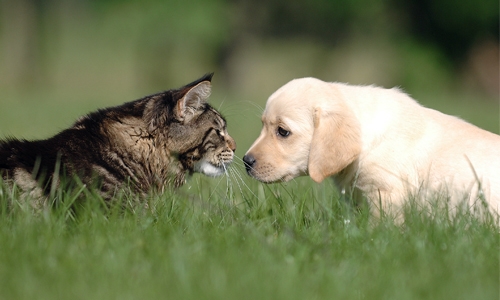PET VET - Diabetes mellitus in dogs and cats
Diabetes mellitus is a disorder of carbohydrate metabolism due to relative or absolute insulin deficiency leads to increase in blood glucose level. Normal fasting value for blood glucose in dogs and cats is 75–120 mg/dL. Most cases of diabetes occur in middle-aged dogs and middle-aged to older cats. In dogs, females are affected twice as often as males and obese male cats were more commonly affected than females; no breed predilection is seen in cats as in dogs.
Progesterone (pregnancy) predisposes to DM in dogs and obesity in both dogs and cats. Common signs include Excessive urination, excessive thirst and hunger, vomiting, lethargy and weight loss even with normal appetite
Diabetic animals have decreased resistance and increased susceptibility to bacterial and fungal infections of urinary bladder, kidney, skin and respiratory system. Fatty liver due to lipid accumulation is common in diabetic dogs and cats. In cats, hepatic lipidosis may occur in conjunction with diabetes mellitus. Cataracts develop frequently in dogs (not cats) with poorly controlled diabetes mellitus.
Diagnosis is from complete blood count, chemical profile, and urinalysis.
Treatment involves a combination of weight reduction, diet, insulin therapy, and possibly oral medicines. Intact females should be neutered. In cats the use of high-protein, low-carbohydrate diets and in dogs, diets that are high in fiber and complex carbohydrates are preferred. Soft and moist foods will be avoided because they cause rapid accumulation of glucose in the body.
When insulin therapy has been instituted, the blood glucose should be checked frequently until an adequate maintenance dose has been determined. Once the animal is on maintenance therapy and its condition is stable, it should be reassessed every 4–6 months.
Related Posts

